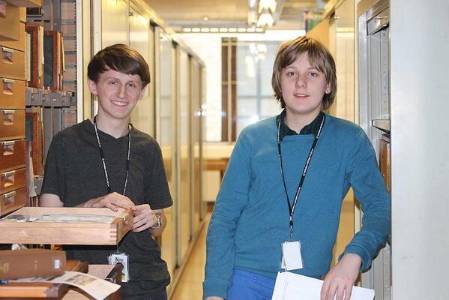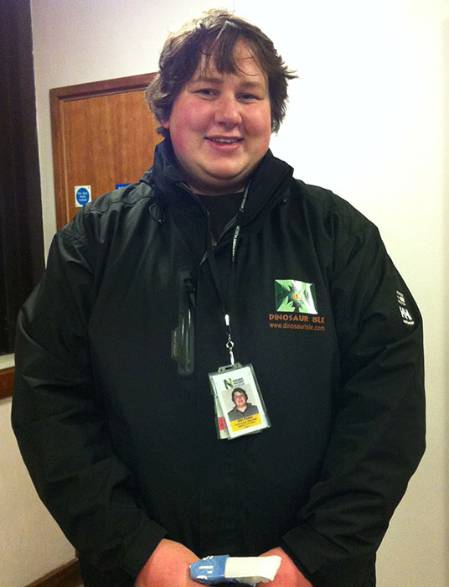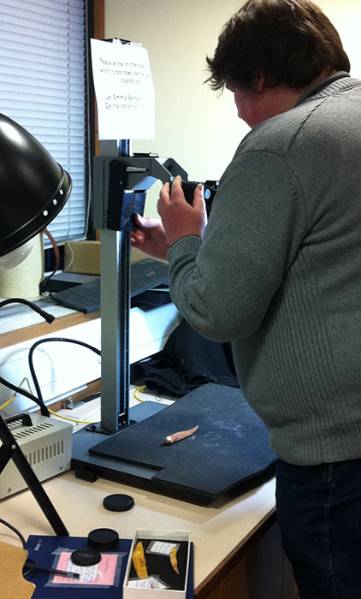During school holidays the Museum offers a small number of work experience placements for students to spend a week finding out more about working at the Museum. This can vary from helping with the Sensational Butterflies exhibition to helping researchers or curators like myself behind the scenes.
During the February half term this year I had two excellent students who came and helped me for the week in the Fossil Fish Section. Below James and Derek tell us what they got up to during the week here.
James Appleby
Getting a work experience placement at the Natural History Museum was great, to get another was a dream come true. However, this time rather than look for damage in the jaws of fossil fish (as I did in a previous placement), Derek and I worked on finding type specimens (those which represent a certain species) to be photographed. These specimens were discovered by Arthur Smith Woodward, a fossil fish specialist who was the focus of the Woodward150 symposium at the Museum on 21 May.
Of course, considering these were holotypes and very old we had to take extra care of them and make sure we did not damage them.
As well as some curatorial work, we also had a chance to help out in the Pleistocene (2.5 million years to 11,000 years) Fossil Mammal Collections, as well as have a look at some of the strange animals found in the Cephalopod (Squid, octopus, ammonites etc.) and Brachiopod Sections (and work out what a Brachiopod is, which I now know is a marine invertebrate with two shells which look different to each other, but both are symmetrical).
Derek Oakly (L) and James Appleby (R) looking for type specimens described by Woodward in the Fossil Fish Section.
Dr. Zerina Johanson, a fossil fish researcher, showed us the fish that she has been working on. What were especially interesting were the exceptionally well preserved fossils from the Gogo Formation in Western Australia.
By the Thursday we had finished the work on Woodward’s fossils, so watched a Nature Live talk about fossil fish by Joe Keating in the afternoon.
The work experience at the Natural history Museum was great as it showed me what it is like to be a curator and what sorts of things we have behind the scenes. (James Appleby)
Derek Oakley
I was given the opportunity to work alongside James at the Natural History Museum for a week. Our main focus was to help contribute to the Woodward150 symposium on 21 May. We were able to go through his many fossilised fish specimens and notes that are not seen by normal members of the public, and it was great!
Alongside this we was able to experience different areas and collections behind the scenes, including a tour of the Brachiopod Collection. We also helped in the Fossil Mammal Section and gained a deeper understanding to some of the research that is conducted here. We were also able to help contribute to a Nature Live event, where we collected the many fossils to be shown and discussed with the public.
It was a fantastic experience at the Natural History Museum and although it was only one week, it will still be one that I am unlikely to forget in the future. (Derek Oakley)
Get involved
I would like to thank James and Derek for all their hard work during the week and I am sure they will go on to do great things in the future.
If you are interested in doing a work experience week with the Museum, have a look at our website. Places are limited and generally oversubscribed, but it will be a very worthwhile and rewarding experience.





.jpg)

